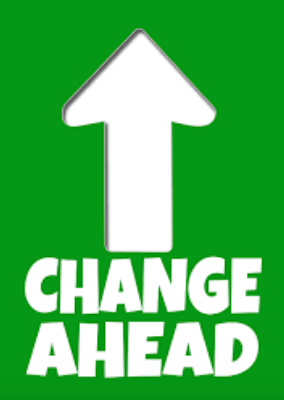“The world as we have created it is a process of our thinking.
It cannot be changed without changing our thinking.”
― Albert Einstein
My world of teaching has been in a four-grade classroom for a number of years now – all subjects, all students, 5th-8th grades. This has lead to a process of thinking and teaching that includes all sorts of skills for differentiating instruction and juggling the inevitable pulling ahead and tugging back of student abilities.
 But, last year I became painfully aware of that my “usual” operations were not working for this particular grouping of students. I could tell their needs were not being fully met and frankly, I was getting burned out trying to span the range of abilities. I needed a change in my thinking surrounding teaching and learning. I began to explore other approaches to teaching and took what I found to my students. I knew that this level of massive change would be akin to fixing a plane while flying it. I needed everyone on board, to be…on board!
But, last year I became painfully aware of that my “usual” operations were not working for this particular grouping of students. I could tell their needs were not being fully met and frankly, I was getting burned out trying to span the range of abilities. I needed a change in my thinking surrounding teaching and learning. I began to explore other approaches to teaching and took what I found to my students. I knew that this level of massive change would be akin to fixing a plane while flying it. I needed everyone on board, to be…on board!
We decided on an approach rooted in personalized learning and with the added feature of flexible seating. Gulp! Big changes!
What I have found most fascinating throughout this experience has been the way in which we have collectively experienced these changes. When I first told my students about flexible seating and how they would get to design the classroom, they were ecstatic! Big sheets of paper, markers and ideas were strewn about as the students set out to “design” our space. Unsurprisingly, every group featured beanbags. Yet, surprisingly, two of the groups had neatly arranged their beanbags into rows of five by four. Changing thinking is tricky…
The 2019-21Operating Budget request has been released by Superintendent Reykdal. In this budget, there is a $37 million increase in spending for professional development to occur over the next two years. This request seeks to allow for more comprehensive, on-going and content-relative opportunities to develop professionally. This emphasis on sustainable change is reflective of the latest research in what makes for effective professional development. Inherent in this quality of professional development is the process of change on behalf of educators.
The concept of moving from “sage on the stage” to “guide on the side” is not new in the field of education. I had honestly thought I had mastered the guiding/coaching side of teaching. A personalized learning approach seemed a natural fit for my students and me. What I have come to discover is that this first six weeks of school has been a steep learning curve, backed with a lot of online professional development as I have reflected on the philosophy of personalized learning and how I am implementing it in my classroom. It turns out the “stage” is awful hard to step away from. Changing thinking is hard…
Education is in a transformative state across the nation and across our state as we work together to prepare our students for the futures before them. We must change our thinking to meet their changing futures. This level of transformative change in the classroom and in our teaching requires time, effort and resources. The operating budget set forth by Superintendent Reykdal allows for the time to implement such changes. The vast majority of educators I know are willing to put in the effort for change – that is if it is “real” and worthy. Now, it will be interesting to see how the availability of resources unfolds to meet the challenge of changing our thinking.
Such an informational and helpful post it is. Thank you so much for writing and sharing this valuable piece of writing with us. Education is no doubt, a pillar of leading a successful life.
I cannot even imagine the pedagogical toolbox you must have to offer that kind of differentiation for so many kids. I have one class (of only 10 kids) that has a major personalized learning element to it… but they’re all grades 10-12 and it is an English content class… and I’m lucky that these kids are easily the most cooperative and self-directed kids I could hope for. I can only imagine how hard it would be if anyone of those factors were different.
As for your spot-on observations about change… though CSTP I was able to do some learning about systems change the last couple of years, and one of the big key concepts of lasting change is that we have to be “problem-specific and user-centered.” We have to know exactly what problem “it” is we are trying to solve, and we need to make sure that we are considering the change from those most directly impacted by it (those who use the “it”, those who participate in the “it”). Why change often seems to stall, in my opinion, is that we change because the winds around us are changing, rather than to address a specific problem… and too often, change fails because we don’t consider the point of view of those most closely impacted by the change. More on that change stuff: https://www.carnegiefoundation.org/our-ideas/six-core-principles-improvement